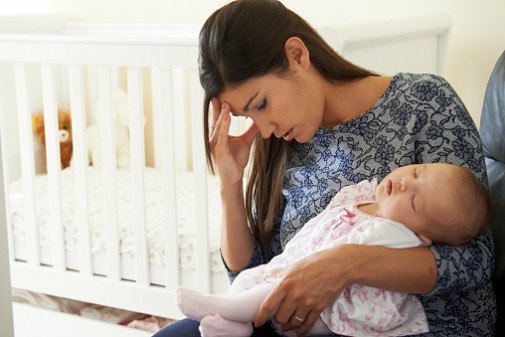Signs of depression may appear months after childbirth

New research suggests possible changes to how and when women are evaluated for postpartum depression following the birth of a child.
Screening mothers for depression shortly after birth may fail to identify those at high risk for postpartum depression in later months, according to a recent study in the Annals of Family Medicine. Researchers found that for many, the first signs of depression appeared months later.
“I think we can all be more aware of the importance of screening for depression in this key group of patients,” says Dr. Jeness Barthel, obstetrician/gynecologist on staff at Advocate Sherman Hospital in Elgin, Ill. “This study highlights the importance of routine postpartum depression screenings during the 12-month period after delivery.”
The study used data from 1,432 women who participated in a larger study on maternal depression in 16 U.S. states. The average age of participants was 26.7 years old, and about 33 percent were first-time moms.
Women filled out questionnaires that rated their possible symptoms of depression from zero (none) to three (almost daily). That included subjects such as feelings of hopelessness, difficulty concentrating, lack of appetite, and thought of self-harm.
They were screened at four to 12 weeks, six months, and a year after giving birth. A score of 10 or higher indicated a moderate to severe risk for depression.
All 1,432 women scored below 10 during the first screening, but at six months, 10.9 percent had scores of 10 or higher. Of those moms, about 30 percent were at a very high risk for depression. At one year, an additional 6.1 percent reported scores higher than 10, with 19 percent at a very high risk.
Overall, despite showing no risk for depression during the initial screening, 13.5 percent of participants had a high risk for depression in the two follow-up screenings.
At her practice, Dr. Barthel screens for depression at the first prenatal visit, between 24 to 28 weeks during pregnancy, and six weeks after childbirth. She generally won’t see her patient again until her next Pap smear, which takes place a year later.
“I think it makes the most sense that pediatricians administer these screenings [after six weeks] as the child will likely be coming in for routine visits, vaccines, etc. throughout the next year,” Dr. Barthel says. “In my experience, we are usually hearing about postpartum depression from the pediatricians, so this works very well in the community we serve.”
The study was conducted at Rochester, Minn.-based Olmsted Medical Center.
Related Posts
Comments
2 Comments
About the Author
health enews staff is a group of experienced writers from our Advocate Health Care and Aurora Health Care sites, which also includes freelance or intern writers.


















For clarification, is it reasonable to categorize depression of a “new mother” after a certain time period has passed as postpartum depression? I thought this form of depression had a particular time frame to be labeled as such. Raising a newborn is hard stuff and I wouldn’t be surprised if the stress and depression that follows stems from their everyday lives (less personal time, body issues, sleepless night, marriage/family issues, ect.) rather than the dramatic drop in hormones estrogen and progesterone that exacerbate postpartum depression immediately after childbirth. It would be interesting to know when these mothers are just experiencing depression rather than postpartum depression.
Pediatricians in my community use screening tools for the mom. It is convenient and if a mother is struggling it is ties in the importance of taking care of yourself for the benefit of your child.